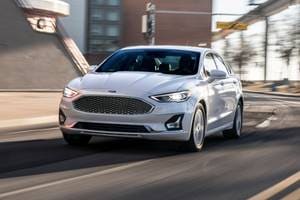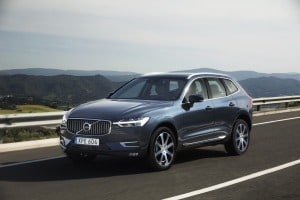Edmunds.com's 2014 Auto Sales Forecast: 16.4 Million

The auto industry will enjoy another year of growth in 2014 with new car sales topping 16 million for the first time since 2007. Edmunds.com forecasts sales of 16.4 million light vehicles in 2014, an increase of nearly 6 percent over the 15.5 million expected in 2013. Many of the same sales drivers from 2013 will remain in play and support car sales momentum. The release of pent-up demand from buyers who deferred sales during the recession will continue as the increasingly aged fleet drives more consumers back to the new car market. Sales will also benefit from an expected 300,000 additional lease returners compared to 2013, who will lease or buy a new vehicle when their current leases terminate. What's more, with recent auto sales showing resiliency in the face of fiscal uncertainty at home and slowing economies abroad, downside risk to sales growth has decreased for 2014. The main drag on sales growth expected in 2014 comes from the need for stronger economic growth to allow many of the remaining sidelined buyers to return to the market, including young people, lower income households, and small businesses.

Sales Boosters Still In Play
The auto sales environment in 2014 will closely resemble the environment in 2013. Various indicators point to further release of pent-up demand in 2014, even after a substantial release in 2013. For example, the average age of trade-ins has increased year-over-year in every month of 2013 to date. Despite buyers trading in ever-older vehicles, the fleet of vehicles in operation has continued to age as well; the average age of all light vehicles on the road increased from 11.2 years in 2012 to 11.4 years in 2013. As a result, still more vehicles will age to the point where they "need" to be replaced in 2014, forcing buyers who had delayed getting a new car to return to market. With used car prices still elevated over past norms and used car supply still tight, the new car market will remain attractive to many of these buyers.
New car sales also will benefit from another 2013 sales booster in 2014 — a surge in lease returns. Since bottoming out in 2009, leasing has increased in each subsequent year. The first effects of the leasing recovery showed up in sales last year when the most common three-year leases from 2010 terminated, increasing the pool of likely new car buyers by nearly half a million. And, yet another 300,000 more lessees are expected to return to the market in 2014 than in 2013, contributing 2 percentage points of the nearly 6 percent overall growth in 2014.
Economic Conditions Cooperating
Economic conditions in 2014 also should mirror those in 2013, including moderate but steady economic growth and job creation, low interest rates and readily available credit, low inflation, a strong stock market, and improved housing prices. These conditions — and, in particular, their persistence over a number of months — inspire consumer confidence and motivate consumers to buy new cars.
At the same time, the primary downside risk to auto sales — fiscal issues at home and abroad — decreased in 2013 and should remain diminished in 2014. Even though the economy has yet to achieve the momentum typically seen in previous recoveries, enough progress has been made toward recovery that consumer willingness to buy new cars has not been daunted by recent fiscal crises.
Hardest Hit Groups Still A Drag On Auto Sales
Despite risk decreasing and so many growth drivers in play, auto sales will grow less in 2014 than in any year of the recovery to date, posting less than 6 percent growth and adding just 900,000 units to sales. The main cause of this slowdown is the shrinking pool of pent-up demand and the greater economic hurdles faced by consumers who remain out of the new car market. The economy has not yet improved enough for recovery to widely reach the groups hardest hit by the recession, including young people, lower income households, and small businesses. Even though auto sales from these groups have improved from recession lows, their recovery still lags the rest of the market. As a result, the hardest hit groups will comprise a greater portion of pent-up demand as more and more sidelined buyers in better financial condition return to market. Without stronger economic growth that rejuvenates these weaker buyers, auto sales growth will continue to slow.


Lacey Plache is the Chief Economist for Edmunds.com. Follow @AutoEconomist on Twitter.





